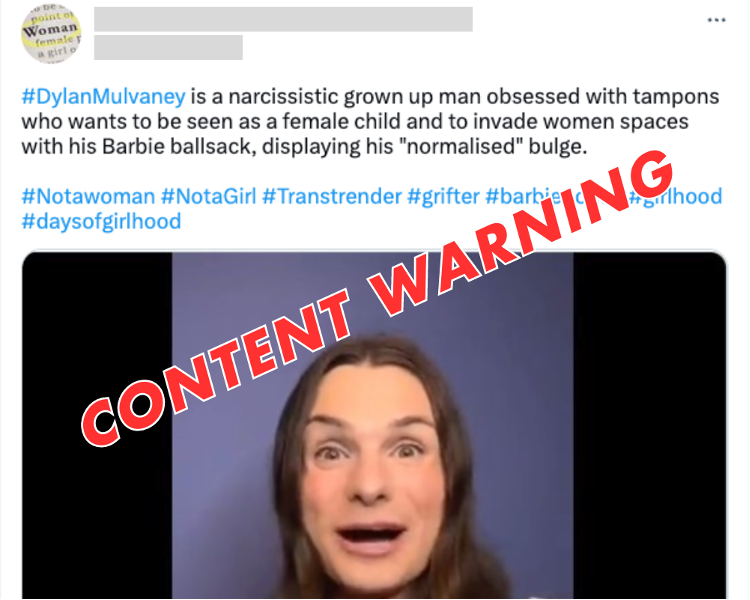Online Anti-LGBTQ Hate Terms Defined: “Transtrender”
This entry is part of the GLAAD Guide to Anti-LGBTQ Online Hate and Disinformation, an ongoing project to identify some of the most prevalent and egregious terms, tropes, and concepts that are used to harass, attack, and spread malicious misinformation about LGBTQ people on social media. Learn more here.
*CONTENT WARNING*
The example below includes a hateful term, phrases and imagery.
“Transtrender”

This misguided and false trope claims that trans and/or non-binary people are not really trans, but are merely following modern “trends” of gender exploration for social or online capital. The trope is also intertwined with the hate-driven conspiracy theories of “gender ideology” and “social contagion” which falsely state that the trans experience is learned, a choice, and is consciously adopted from others, rather than an innate identity. The Trans Language Primer offers a thorough, yet concise debunking: “A derogatory term used most often by transmedicalists and TERFs to imply that certain people only identify as transgender because it is trendy— often trans youth and non-binary people. This is false; the rise in people identifying as trans is due to greater visibility, representation, and education that allows more people to learn about the language that describes their experiences earlier and in places where that language hasn’t been common before.”
Wiktionary accurately describes the term as derogatory (note that there are deeper layers of discussion of the concept within the trans community itself), and a 2017 Quartz article on alt-right neologisms offers a history of its transphobic origins on Reddit. This trope is also another example of how hate and misinformation are often entwined together in a given meme or concept. Explore more via GLAAD’s Guide to Anti-LGBTQ Online Hate and Disinformation
Conclusion
This is just one example of anti-LGBTQ online hate and disinformation. Every term and concept should be evaluated in context. For instance, LGBTQ people and allies may use hashtags with hate terms as counterspeech, or slurs such as “tranny” or “dyke” may be used self-referentially to reclaim them. This guide will be updated on an ongoing basis. Please see the latest GLAAD Social Media Safety Index report for a deeper exploration of the current social media landscape for LGBTQ people, including GLAAD’s recommendations and thought leadership in the field.
How to Report Anti-LGBTQ Online Hate Speech and Harassment
Every major social media platform has policies which prohibit hate and harassment on the basis of protected characteristics, including sexual orientation and gender identity. To learn how to report potentially violative content, check out GLAAD’s LGBTQ Digital Safety Guide, which includes basic tips on helping our community be more safe online.
About the GLAAD Social Media Safety Program
As the leading national LGBTQ media advocacy organization, GLAAD is working every day to hold social media platforms, tech, and AI companies accountable, and to secure safer online spaces for LGBTQ people. The GLAAD Social Media Safety Program produces the highly-respected annual Social Media Safety Index (SMSI) and researches, monitors, and reports on a variety of issues facing LGBTQ social media users — with a focus on safety, privacy, and expression.












